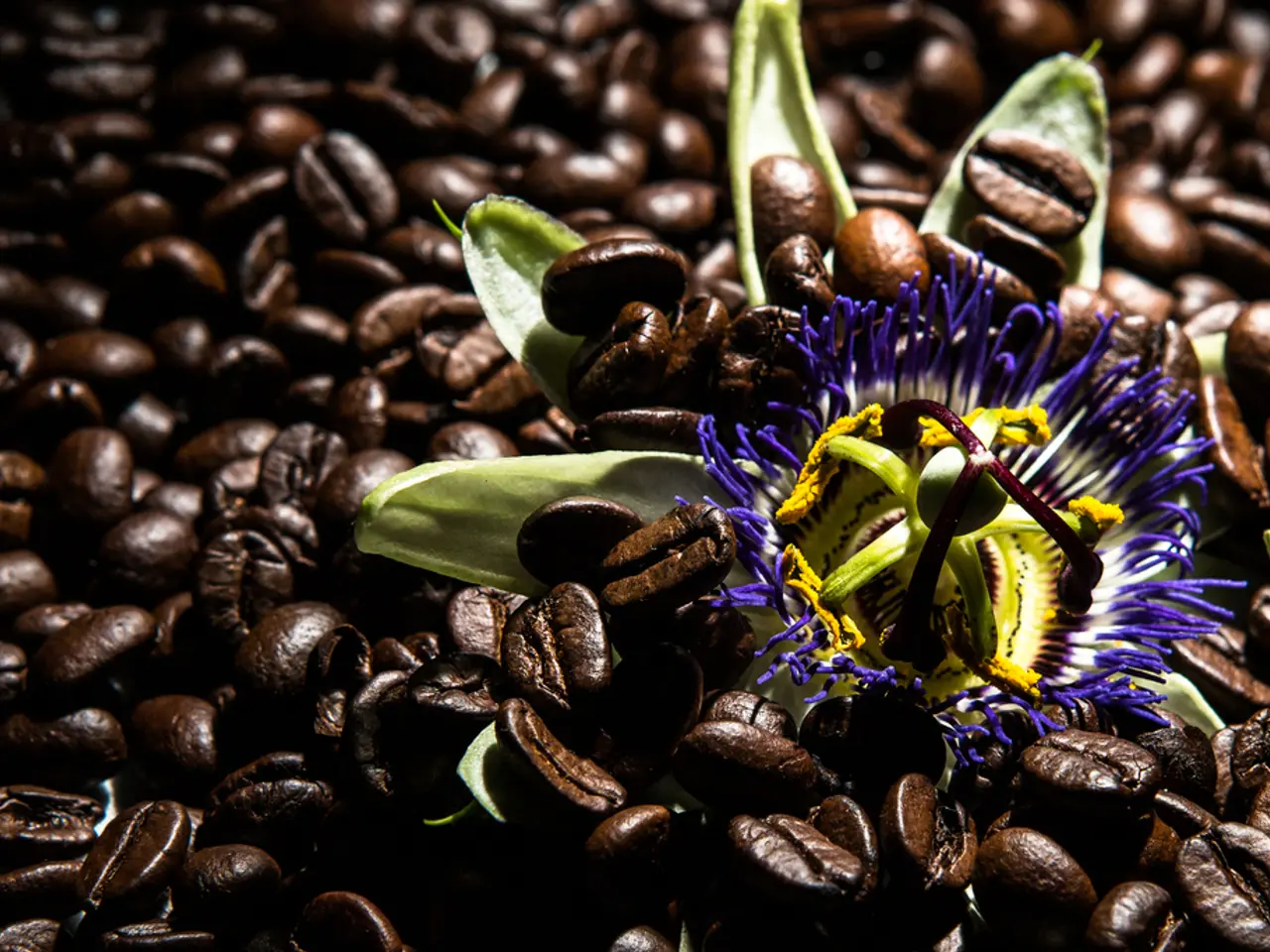Coffee Grown from Arabica Species Experiences Challenges Due to Favorable Rainfall in Brazil
In 2025, the global coffee market is experiencing a surge in demand but is grappling with significant supply constraints, particularly affecting arabica and robusta coffee due to adverse weather conditions in key producing countries Brazil and Vietnam.
Production Levels and Inventories ----------------------------------
Brazil, the world's largest coffee producer and a major supplier of arabica coffee, is facing a smaller arabica crop in 2025 following severe weather setbacks in 2024. Prolonged drought and unfavorable weather last year reduced flowering and yields, leading to depleted inventories. These depleted inventories, which typically buffer market volatility, are expected to cause a global supply shortfall and higher prices. The drop in Brazilian arabica output is a critical factor impacting the global coffee supply chain this year.
Vietnam, a leading robusta coffee producer, also faced adverse weather conditions including drought and delayed harvests, contributing to supply strain. These conditions have further affected the availability and stability of robusta coffee supplies, intensifying pressure on global markets.
Market Impact and Price Trends -------------------------------
The reduced production and inventories in Brazil and Vietnam have driven coffee prices up sharply. In 2024, prices on the New York commodity exchange for coffee soared about 40%, approaching historic highs around $4.00 per pound for arabica, reflecting tight supply. This price surge is coupled with expectations of continued coffee cost increases in 2025 due to the ongoing supply constraints and heightened global demand.
Weather Conditions -------------------
Brazil’s coffee regions endured a prolonged drought and unfavorable weather in 2024, severely impacting the coffee flowering and yield, leading to the current depleted stocks. Vietnam experienced drought and delayed harvests, which compounded supply chain disruptions and added to the supply deficit, particularly for robusta coffee.
Broader Market Context ----------------------
Despite supply challenges, the global coffee market continues to grow robustly. The market size was estimated at $269.27 billion in 2024 and is projected to reach $369.46 billion by 2030, growing at a CAGR of 5.3%. This growth is driven by rising demand in emerging markets, evolving consumer preferences for specialty and gourmet coffees, and the rise of convenient coffee formats like ready-to-drink options.
Sustainability and responsible sourcing have become crucial, with coffee producers and suppliers increasing efforts to adapt to climate change and consumer demands for ethically sourced coffee.
Summary -------
The coffee market in 2025 is facing significant supply constraints driven by weather-related production issues in Brazil and Vietnam, leading to higher prices and tighter availability, especially for arabica and robusta beans. Meanwhile, global demand remains strong, stimulated by evolving consumer trends and a growing preference for specialty and convenient coffee products.
| Factor | Arabica Coffee (Brazil) | Robusta Coffee (Vietnam) | |--------------------|-------------------------------------------------------|---------------------------------------------------| | Production Levels | Smaller crop in 2025 due to 2024 drought & poor weather | Impacted by drought and delayed harvests | | Inventories | Depleted stocks, leading to global supply shortfall | Strained supply due to adverse weather | | Weather Conditions | Prolonged drought and unfavorable climate in 2024 | Drought and delayed harvests | | Market Impact | Prices surged ~40% in 2024, nearing historic highs | Supply disruptions contribute to price pressure |
Additional updates from the USDA's Foreign Agricultural Service and other sources indicate that Brazil's 2025/26 coffee production is expected to increase by 0.5% year-over-year, and inventories have risen to a 4-3/4-month high on May 27. However, arabica coffee posted a 6-3/4 month low last Friday and is down today by 1.80%. Brazil is the world's largest producer of arabica coffee, and the USDA's biannual report forecasts that 2025/26 ending stocks will climb by +4.9% to 22.819 million bags.
In Vietnam, the Vietnam Coffee and Cocoa Association reduced its 2024/25 Vietnam coffee production estimate to 26.5 million bags, and coffee production in the 2023/24 crop year decreased by 20% to 1.472 MMT. Vietnam's 2025/26 coffee output is expected to rise by 6.9% year-over-year to a 4-year high. Vietnam is the world's largest producer of robusta coffee, and the USDA's biannual report forecasts a +7.9% increase in robusta production for 2025/26 to 81.658 million bags. Vietnam's Jan-May 2025 coffee exports are down 1.8% y/y to 813,000 MT, and robusta coffee is up today by 1.19%.
The USDA's biannual report projected that world coffee production in 2025/26 will increase by 2.5% y/y to a record 178.68 million bags. However, the report also forecasts a -1.7% decrease in arabica production for 2025/26 to 97.022 million bags. The drop in the dollar index has sparked some short covering in coffee futures, and Brazil's May green coffee exports decreased by 36% y/y to 2.8 million bags.
Volcafe projects a global 2025/26 arabica coffee deficit of -8.5 million bags. As the global coffee market navigates these challenges, efforts towards sustainability, responsible sourcing, and innovation in coffee production and distribution are expected to remain key factors in ensuring a resilient and sustainable future for the industry.
Sports enthusiasts may consider alternative beverages during their activities, due to the impact of adverse weather conditions on coffee production and the resulting rise in coffee prices. The price surge in coffee, particularly for arabica beans from Brazil and robusta beans from Vietnam, may influence budgets for coffee availability in sports cafeterias or coaching staff's pre-game rituals.






